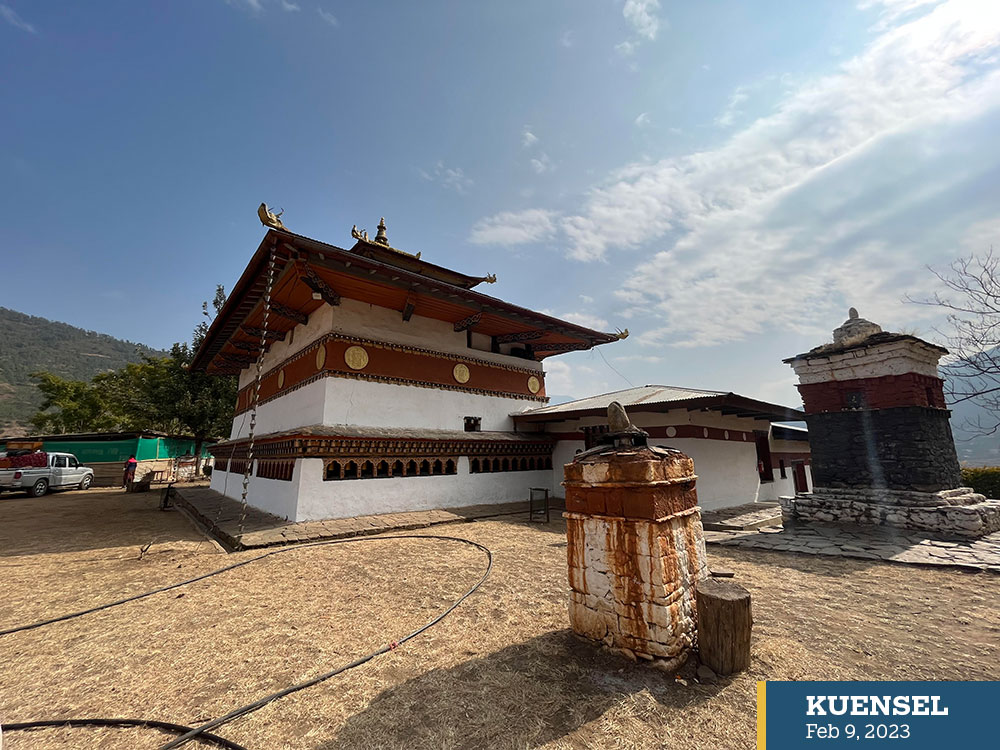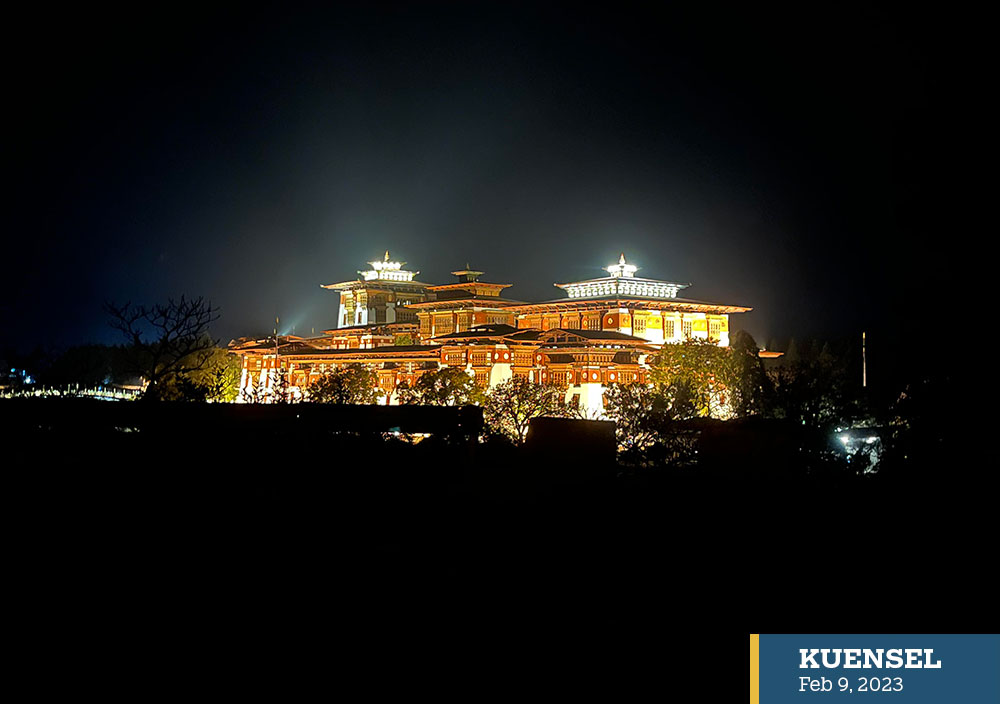From 11,977 tourists who visited Chimi Lhakhang and Punakha dzong
Chencho Dema | Punakha
Chimi Lhakhang in Lobesa and Punakha Dzong, the two most visited places in Punakha brought in a revenue of Nu 11 million from entry fees.
The dzongkhag administration started charging admission fees for Punakha Dzong in 2020 and in 2017 for Chimi Lhakhang.
However, the collection of fees from the Chimi Lhakhang began formally in 2020 as per the directives from the National committee. Fee collection resumed on September 23, 2022, after opening Bhutan for tourism.
In a span of five months, the district administration has collected Nu 11M (Million) from the two monument sites as of January 29. Meanwhile, the dzongkhag collected Nu 31M (Million) from the two sites over a three-year period (2017-2019).
Between September and January 29, a total of 11,977 tourists visited the two sites, according to the Punakha district administration.
The number of tourists visiting the Punakha Dzong was more than that of the Chimi Lhakhang, with 8,335 visitors as opposed to 3,642 for the Chimi Lhakhang.

Chimi Lhakhang
October witnessed the dzongkhag’s largest number of tourists and highest sum collected, with 1,302 tourists visiting Chimi Lhakhang and Nu 1,277,500 being collected, while Nu 2,851,500 was received from 2,919 tourists visiting the dzong.
In September, 241 tourists visited the dzong contributing Nu 237,000 in fees, as opposed to 93 tourists who visited the Chimi Lhakhang with Nu 92,500.
According to Yeshi Dorji, the Economic Development and Marketing Officer, “The number of tourists reflected herein accounts only for those entry fee-paying visitors. The visitors who came under the old SDF are not included.”
The dzongkhag is trying to enhance the services at the monument sites to ensure the maximum satisfaction and worthiness of the entry fee payment.
“It was to provide a high quality of services and amenities during their visits without compromising the sanctity and security of the monument sites at the same time. In order to do so, we need to invest more and they need to pay more,” he said.
“When asked about their experiences, most of the visitors are happy with the services but we also received feedback and we are working on it for the betterment of the monument sites,” he added.
Dzongkhag officials observed that the number of international visitors at the monument sites has reduced since the tourism reopening compared to the pre-pandemic times, especially the number of regional tourists.
With the drop-in numbers, the district now no longer sees overcrowding of visitors, disturbances and littering at the monument sites.
“In a way, we are not focusing on numbers but expecting only quality tourists to visit us,” he said.
With the transformation of the tourism sector and aggressive promotion of the tourism destinations in the country by all the stakeholders involved, the dzongkhag expects the number of international visitors to increase in the future.
The dzongkhag is using the monument entry fee fund to pay for restroom supplies and the printing of admission tickets in addition to paying the staff members hired to oversee the monument sites on a monthly basis.
Besides recurring expenses, the Dzongkhag Monument Management Committee intends to utilise the fund for the further development and improvement of monument sites to provide better services without compromising the sanctity and security, only upon approval from the National Monument Committee.
Punakha, one of the country’s tourism hotspots, is home to both established monument sites and uncharted territory. Only the Punakha Dzong and Chimi Lhakhang, were chosen to be made tourist-friendly in the initial stage.
However, other locations, including the Wolakha Sangchen Dorji Lhundrup Nunnery and the Khamsum Yulley Namgayl Chorten are scheduled to open in the next phases.
“It was noted that these monument sites receive a sizable number of monthly visitors from abroad,” Yeshi Dorji added.
International tourists visiting the two sites are required to pay admission fees of Nu 1,000 for adults, Nu 500 for children aged 5 to 18 and no fee is charged for children under 5 years old and students.
The fees were imposed on tourists at eight locations during the pre-pandemic period, according to the Tourism Council of Bhutan (TCB).
Taktsang, Taschichho Dzong, Jigme Dorji Wangchuk National Memorial Choeten, Changangkha Lhakhang, Kyichu Lhakhang, Rinpung Dzong, Punakha Dzong, and Chimi Lhakhang are among of the locations.
Starting September 23, eight additional locations, including Jampa Lhakhang in Bumthang, Jangtsa Dumgseg Lhakhang and Dobji Dzong in Paro, Rinchending Goenpa and Palden Tashi Choling Shedra in Phuentsholing, Buddha Dordenma and Simtokha Dzong and Trongsa Dzong started collection of entry fee of Nu 1000.


